($16, Jeanne Marie de Champs Selection): 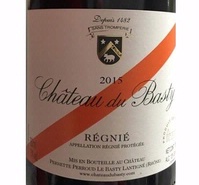 The wines from Régnié, the last of the 10 villages in Beaujolais to achieve cru status, have a tendency to be hard and rustic. Not this one. This Régnié from the Château du Basty shows great refinement. … Read more
The wines from Régnié, the last of the 10 villages in Beaujolais to achieve cru status, have a tendency to be hard and rustic. Not this one. This Régnié from the Château du Basty shows great refinement. … Read more
Category Archives: WRO Reviews
Castello di Radda, Chianti Classico Riserva DOCG (Tuscany, Italy) 2012
($42): 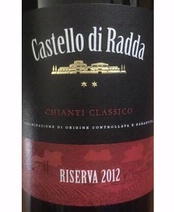 Befitting a Riserva, Castello di Radda’s 2012 has depth balanced by a gutsy firmness. Even with its youthful vigor, the balance of dark fruit and savory notes is apparent. An appealing hint of bitterness in the finish reminds you this is a wine meant for the dinner table. … Read more
Befitting a Riserva, Castello di Radda’s 2012 has depth balanced by a gutsy firmness. Even with its youthful vigor, the balance of dark fruit and savory notes is apparent. An appealing hint of bitterness in the finish reminds you this is a wine meant for the dinner table. … Read more
Castello di Radda, Chianti Classico DOCG (Tuscany, Italy) 2015
($22): 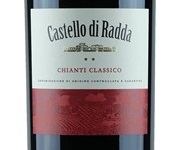 In a word, delicious. It’s just what you’d expect from Chianti Classico: a wonderful combination of dark cherry-like fruit and herbal qualities. Not all gussied up with oak, the alluring earthiness of Chianti Classico comes through. Polished tannins in this mid-weight wine impart a suave texture.… Read more
In a word, delicious. It’s just what you’d expect from Chianti Classico: a wonderful combination of dark cherry-like fruit and herbal qualities. Not all gussied up with oak, the alluring earthiness of Chianti Classico comes through. Polished tannins in this mid-weight wine impart a suave texture.… Read more
Castello di Radda, Chianti Classico DOCG (Tuscany, Italy) “Gran Selezione” 2012
($49): 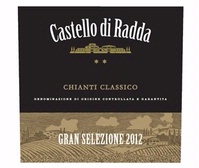 As much as I liked Castello di Radda’s 2012 Chianti Classico Riserva, I must admit, their Gran Selezione from the same vintage is just better. With stricter production standards, Gran Selezione, a relatively new category for Chianti Classico, is supposed to highlight a producer’s top wine. … Read more
As much as I liked Castello di Radda’s 2012 Chianti Classico Riserva, I must admit, their Gran Selezione from the same vintage is just better. With stricter production standards, Gran Selezione, a relatively new category for Chianti Classico, is supposed to highlight a producer’s top wine. … Read more
Michele Chiarlo, Gavi DOCG (Piedmont, Italy) “Le Marne” 2016
($18, Kobrand): 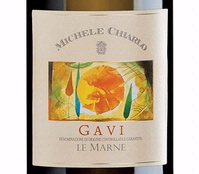 One tends to forget about Chiarlo’s white wines since they make such stunning reds. Here’s one that should not be forgotten. Not an opulent wine, this Gavi still has good depth and is piercing, mineral-y and refined. It is cutting and stony, a perfect foil for a tomato-based seafood dish, such as swordfish in a tomato-caper.… Read more
One tends to forget about Chiarlo’s white wines since they make such stunning reds. Here’s one that should not be forgotten. Not an opulent wine, this Gavi still has good depth and is piercing, mineral-y and refined. It is cutting and stony, a perfect foil for a tomato-based seafood dish, such as swordfish in a tomato-caper.… Read more
Michele Chiarlo, Barolo DOCG (Piedmont, Italy) Cerequio 2013
($102, Kobrand): 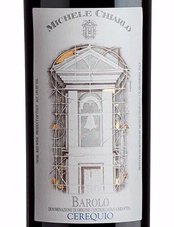 Chiarlo was largely responsible for the resurrection of this iconic vineyard in La Morra, that, according to Kerin O’Keefe, a world’s expert on Italian wine in general and Barolo in particular, laid abandoned until the 1950s even though it had been listed as a top spot in an authoritative 19th century classification of Barolo’s vineyards. … Read more
Chiarlo was largely responsible for the resurrection of this iconic vineyard in La Morra, that, according to Kerin O’Keefe, a world’s expert on Italian wine in general and Barolo in particular, laid abandoned until the 1950s even though it had been listed as a top spot in an authoritative 19th century classification of Barolo’s vineyards. … Read more
Michele Chiarlo, Barolo (Piedmont, Italy) Cannubi 2012
($86, Kobrand): 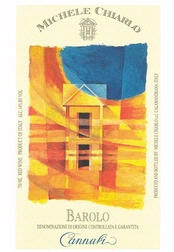 Chiarlo owns about 3-acres of vines in the heart of Cannubi, arguably Barolo’s most famous vineyard. From it, they make a sensational wine. Their 2012 Cannubi combines power and elegance, just as the textbooks say. Its wonderful aromatics and intriguing tar-like character make for an unusual pairing, but the combination is captivating and keeps you coming back for another look. … Read more
Chiarlo owns about 3-acres of vines in the heart of Cannubi, arguably Barolo’s most famous vineyard. From it, they make a sensational wine. Their 2012 Cannubi combines power and elegance, just as the textbooks say. Its wonderful aromatics and intriguing tar-like character make for an unusual pairing, but the combination is captivating and keeps you coming back for another look. … Read more
Cantine Sant’Agata, Barbera d’Asti DOCG (Piedmont, Italy) “Baby” 2016
($11, Montcalm Wine Importers): 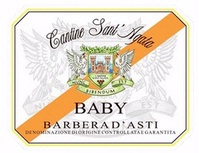 This juicy mid-weight wine is an example of why Barbera d’Asti is so popular. Lip-smacking, cherry-like acidity enlivens the briary, spicy character of the wine’s fruitiness. Mild tannins make it perfect for current consumption. This is not an “important” wine, but rather one you could open on the spur of the moment — it has a screw cap, so you don’t even need a corkscrew — when a take-out pizza arrives at your door. … Read more
This juicy mid-weight wine is an example of why Barbera d’Asti is so popular. Lip-smacking, cherry-like acidity enlivens the briary, spicy character of the wine’s fruitiness. Mild tannins make it perfect for current consumption. This is not an “important” wine, but rather one you could open on the spur of the moment — it has a screw cap, so you don’t even need a corkscrew — when a take-out pizza arrives at your door. … Read more
Bricco dei Guazzi, Barbera d’Asti DOCG (Piedmont, Italy) 2013
($13, Montcalm Wine Importers): 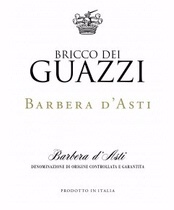 A more robust, richer style of Barbera, Bricco dei Guazzi’s 2013 still maintains the grape’s hallmark juicy acidity and low-ish level of tannins that makes it hard to resist. Darker in color with a whiff of oak flavors, it a seductive, suavely textured wine that has a black, rather than red, fruit profile. … Read more
A more robust, richer style of Barbera, Bricco dei Guazzi’s 2013 still maintains the grape’s hallmark juicy acidity and low-ish level of tannins that makes it hard to resist. Darker in color with a whiff of oak flavors, it a seductive, suavely textured wine that has a black, rather than red, fruit profile. … Read more
Feudi di San Gregorio, Taurasi Riserva DOCG (Campania, Italy) Piano di Montevergine 2011
($75, Terlato Wines International): 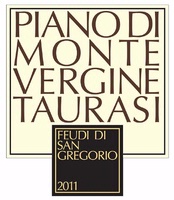
Illuminati, Montepulciano d’Abruzzo (Abruzzo, Italy) “Spiano” 2015
($15, Montcalm Wine Importers): 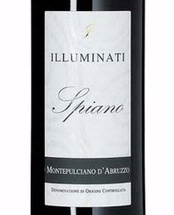 Here is a wine that provides more enjoyment than the price suggests. Wines, especially those made from the Montepulciano grape and especially from Abruzzo, the region east of Rome on the Adriatic coast, have little or no prestige, which keeps their prices depressed. … Read more
Here is a wine that provides more enjoyment than the price suggests. Wines, especially those made from the Montepulciano grape and especially from Abruzzo, the region east of Rome on the Adriatic coast, have little or no prestige, which keeps their prices depressed. … Read more
Domaine Drouhin Oregon, Eola-Amity Hills (Willamette Valley, Oregon) Pinot Noir Roserock Vineyard “Zéphirine” 2014
($60): 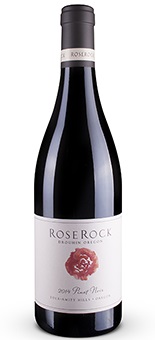 Not surprisingly, Domaine Drouhin Oregon is following the Burgundy tradition of terroir: simply put, where the grapes grow influences the taste and character of the wine. In addition to their “home” vineyard in the Dundee Hills of the Willamette Valley, DDO has acquired an additional vineyard, Roserock, in the Eola-Amity Hills subzone of the Willamette. … Read more
Not surprisingly, Domaine Drouhin Oregon is following the Burgundy tradition of terroir: simply put, where the grapes grow influences the taste and character of the wine. In addition to their “home” vineyard in the Dundee Hills of the Willamette Valley, DDO has acquired an additional vineyard, Roserock, in the Eola-Amity Hills subzone of the Willamette. … Read more
Domaine Drouhin Oregon, Dundee Hills (Willamette Valley, Oregon) Pinot Noir 2014
($42): 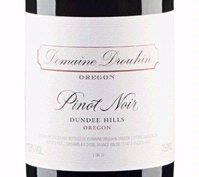 The Drouhin family, with their rich traditions and deep roots in Burgundy, made history in Oregon — and quite a stir back in Beaune — by creating Domaine Drouhin Oregon thirty years ago. Since then, other Burgundy producers have followed, but Drouhin was the first of the French to recognize the extraordinary potential in Oregon for Chardonnay and Pinot Noir. … Read more
The Drouhin family, with their rich traditions and deep roots in Burgundy, made history in Oregon — and quite a stir back in Beaune — by creating Domaine Drouhin Oregon thirty years ago. Since then, other Burgundy producers have followed, but Drouhin was the first of the French to recognize the extraordinary potential in Oregon for Chardonnay and Pinot Noir. … Read more
Domaine Drouhin Oregon, Dundee Hills (Willamette Valley, Oregon) Pinot Noir “Laurène” 2013
($70): 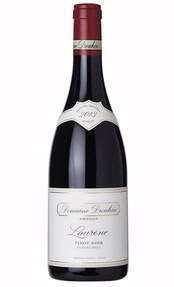 The Laurène bottling is Domaine Drouhin Oregon’s (a.k.a. DDO) reserve wine. As such, it is deeper and more concentrated, but without sacrificing refinement and elegance. While their “regular” bottling highlights the fruitiness found in Oregon, the Laurène emphasizes the gorgeous earthy leafy aspect of Oregon Pinot Noir. … Read more
The Laurène bottling is Domaine Drouhin Oregon’s (a.k.a. DDO) reserve wine. As such, it is deeper and more concentrated, but without sacrificing refinement and elegance. While their “regular” bottling highlights the fruitiness found in Oregon, the Laurène emphasizes the gorgeous earthy leafy aspect of Oregon Pinot Noir. … Read more
Duckhorn, Napa Valley (California) Sauvignon Blanc 2016
($30): 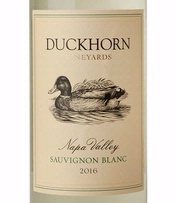 Though Duckhorn Vineyards may be known, rightly so, for their Merlot-based wines, they also make a strikingly good Sauvignon Blanc. Their 2016 marries fruitiness and pungency without the former being tropical or overblown and without the latter being shrill. A suave creaminess likely comes from a touch of Semillon in the blend and the judicious use of oak. … Read more
Though Duckhorn Vineyards may be known, rightly so, for their Merlot-based wines, they also make a strikingly good Sauvignon Blanc. Their 2016 marries fruitiness and pungency without the former being tropical or overblown and without the latter being shrill. A suave creaminess likely comes from a touch of Semillon in the blend and the judicious use of oak. … Read more
Silvio Nardi, Brunello di Montalcino (Tuscany, Italy) Manachiara 2012
($92, Kobrand): 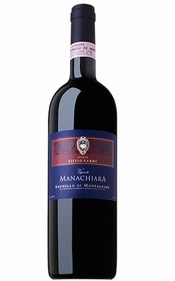 Silvio Nardi, one of my favorite Brunello producers, consistently makes a stunning wine from their Manachiara vineyard, some of whose vines date back to the 1960s. Located on the east side of Montalcino, the vineyard has a mixture of clay and sand in the soil, which helps account for the wine’s seemingly paradoxical combination of power and elegance. … Read more
Silvio Nardi, one of my favorite Brunello producers, consistently makes a stunning wine from their Manachiara vineyard, some of whose vines date back to the 1960s. Located on the east side of Montalcino, the vineyard has a mixture of clay and sand in the soil, which helps account for the wine’s seemingly paradoxical combination of power and elegance. … Read more
Michele Chiarlo, Barbera d’Asti Superiore, Nizza DOC (Piedmont, Italy) La Court 2013
($42, Kobrand): 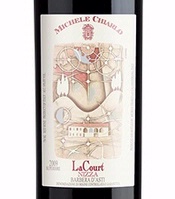 In addition to making noteworthy Barolo, Chiarlo, a top producer in Piedmont, also makes excellent wine from lesser known areas, such as Nizza. Starting with the 2014 vintage, this wine will be labeled simply Nizza Riserva DOCG, since this small subzone of the Barbera d’Asti region was recently awarded DOCG status. … Read more
In addition to making noteworthy Barolo, Chiarlo, a top producer in Piedmont, also makes excellent wine from lesser known areas, such as Nizza. Starting with the 2014 vintage, this wine will be labeled simply Nizza Riserva DOCG, since this small subzone of the Barbera d’Asti region was recently awarded DOCG status. … Read more
Les Vignerons d’Estézargues, Côtes du Rhône-Villages (Rhône Valley, France) “Domaine Grès St. Vincent” 2015
($15, Jenny & François Selections): 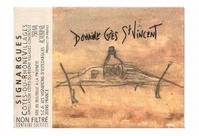 This fine co-op, Les Vignerons d’Estézargues, bottles wine from individual members by using a domaine label, such as this one, Domaine Grès St. Vincent. The usual Mediterranean blend of Grenache, Syrah, Mourvèdre and Carignan, produces an unusually fine wine. … Read more
This fine co-op, Les Vignerons d’Estézargues, bottles wine from individual members by using a domaine label, such as this one, Domaine Grès St. Vincent. The usual Mediterranean blend of Grenache, Syrah, Mourvèdre and Carignan, produces an unusually fine wine. … Read more
Les Vignerons d’Estézargues, Côtes du Rhône-Villages (Rhône Valley, France) “Domaine Les Genestas” 2016
($15, Jenny & François Selections): 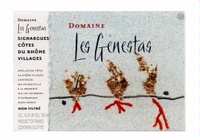 This single grower wine, Domaine Les Genestas, from the top-notch co-op on the “other” (western) side of the Rhone delivers power without sacrificing refinement. Made entirely from Syrah, it combines pepper-like spike with plum-like flavors wrapped in smooth tannins. … Read more
This single grower wine, Domaine Les Genestas, from the top-notch co-op on the “other” (western) side of the Rhone delivers power without sacrificing refinement. Made entirely from Syrah, it combines pepper-like spike with plum-like flavors wrapped in smooth tannins. … Read more
Les Vignerons d’Estézargues, Côtes du Rhône (Rhône Valley, France) “Les Grandes Vignes” 2016
($15, Jenny & François Selections): 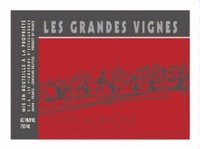 I know this producer, a co-operative, well, having rented a summer vacation house fifteen minutes down the road every year for a decade. They have many bottlings and many labels, but one thing that is constant is the quality of their wines and the value they deliver. … Read more
I know this producer, a co-operative, well, having rented a summer vacation house fifteen minutes down the road every year for a decade. They have many bottlings and many labels, but one thing that is constant is the quality of their wines and the value they deliver. … Read more
Jean-Claude Mas, Crémant de Limoux (Languedoc, France) “Côté Mas M” Brut NV
($16, EDV Esprit du Vin): 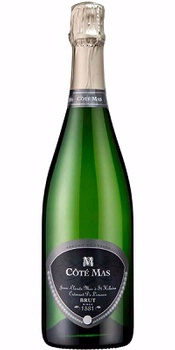 Everyone I know is always looking for affordable non-Champagne sparkling wine. Crémant from France is a good place to look. Crémant, which literally means creamy, has slightly less pressure than Champagne and is made in many wine-producing areas, such as Crémant de Bourgogne, Crémant d’Alsace, and this one, a Crémant de Limoux from the southwestern part of the country. … Read more
Everyone I know is always looking for affordable non-Champagne sparkling wine. Crémant from France is a good place to look. Crémant, which literally means creamy, has slightly less pressure than Champagne and is made in many wine-producing areas, such as Crémant de Bourgogne, Crémant d’Alsace, and this one, a Crémant de Limoux from the southwestern part of the country. … Read more
Boccadigabbia, Colli Maceratesi DOC (Marche, Italy) Ribona “Le Grane” 2016
($16): 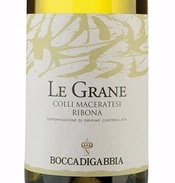 So you’re not familiar with the Colli Maceratesi DOC or the Ribona grape? Join the club. Ribona, more commonly known as Maceratino Bianco, takes its name from the city (Macerata) in the western part of the Marche region. The Colli Maceratesi DOC, comprising only about 600 acres, does not produce a lot of wine, which explains why we in the U.S.… Read more
So you’re not familiar with the Colli Maceratesi DOC or the Ribona grape? Join the club. Ribona, more commonly known as Maceratino Bianco, takes its name from the city (Macerata) in the western part of the Marche region. The Colli Maceratesi DOC, comprising only about 600 acres, does not produce a lot of wine, which explains why we in the U.S.… Read more
Didier Montchovet, Hautes Côtes de Beaune (Burgundy, France) 2014
($29, Jenny & François Selections): 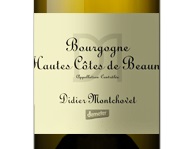 Since the prices for Côte d’Or Burgundy have gone through the roof, Burgundy lovers must look elsewhere. The Hautes Côtes de Beaune, the hinterland really off the beaten track, is a good starting point if you can find a producer who can tame the inherent rusticity in wines from this appellation.… Read more
Since the prices for Côte d’Or Burgundy have gone through the roof, Burgundy lovers must look elsewhere. The Hautes Côtes de Beaune, the hinterland really off the beaten track, is a good starting point if you can find a producer who can tame the inherent rusticity in wines from this appellation.… Read more
Domaine Oudin, Chablis Premier Cru (Burgundy, France) Vaugiraut 2014
($35, Jenny & François Selections): 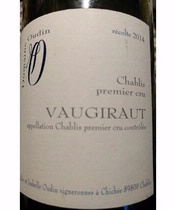 Chablis remains one of the best values in white wine. Where else can you find a Chardonnay-based wine, a premier cru no less, with such character for the price? Nowhere. Domaine Oudin uses no oak aging, enhancing the complexity and body of this wine by stirring the lees. … Read more
Chablis remains one of the best values in white wine. Where else can you find a Chardonnay-based wine, a premier cru no less, with such character for the price? Nowhere. Domaine Oudin uses no oak aging, enhancing the complexity and body of this wine by stirring the lees. … Read more
Didier Montchovet, Hautes Côtes de Beaune (Burgundy, France) 2014
($28, Jenny & François Selections): 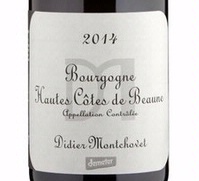 Didier Montchovet tames the coarseness found in many wines from the “Hautes Côtes.” In this Pinot Noir-based example, he has fashioned a charmingly rustic Burgundy than marries earthy and fruity qualities. Montchovet must be talented, indeed, to produce a red like this from the Hautes Côtes in 2014, a difficult year for Pinot Noir in that appellation. … Read more
Didier Montchovet tames the coarseness found in many wines from the “Hautes Côtes.” In this Pinot Noir-based example, he has fashioned a charmingly rustic Burgundy than marries earthy and fruity qualities. Montchovet must be talented, indeed, to produce a red like this from the Hautes Côtes in 2014, a difficult year for Pinot Noir in that appellation. … Read more
Valdo Spumanti, Prosecco Valdobbiadene Superiore DOCG (Veneto, Italy) “Oro Puro” Brut NV
($15, EDV Esprit du Vin): Often the line between DOC and DOCG — and IGT, for that matter — is blurred as far as quality is concerned. Not this time. For Prosecco that is a cut above the others, reach for the DOCG because it encompasses the original zone where the grapes are grown on less-fertile hillsides, which translates to better wine. … Read more
Valdo Spumanti, Prosecco DOC (Veneto, Italy) Brut NV
($10, EDV Esprit du Vin): There is a lot of inexpensive Prosecco on the market, most of it giving the category a bad name. Not this one. Tasted side-by-side with Valdo’s stable mate release from the Veneto’s prime region, Prosecco Valdobbiadene Superiore DOCG (also reviewed this week), it pales in comparison. … Read more
Il Colombaio di Santa Chiara, Vernaccia di San Gimignano DOCG (Tuscany, Italy) “Selvabianca” 2016
($20, Artisanal Cellars): 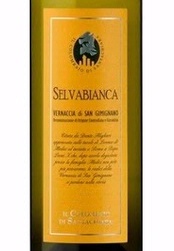 Despite being Italy’s first DOC, Vernaccia di San Gimignano (yes, you read that correctly) rarely receives the accolades it deserves, which is a boon for consumers because its low visibility keeps the prices down. Il Colombaio di Santa Chiara is one of the region’s top producers, so their wines are a good place to start for consumers who want to know what Vernaccia di San Gimignano should taste like. … Read more
Despite being Italy’s first DOC, Vernaccia di San Gimignano (yes, you read that correctly) rarely receives the accolades it deserves, which is a boon for consumers because its low visibility keeps the prices down. Il Colombaio di Santa Chiara is one of the region’s top producers, so their wines are a good place to start for consumers who want to know what Vernaccia di San Gimignano should taste like. … Read more
Fattoria Fibbiano, Toscana IGT (Tuscany, Italy) Ciliegiolo 2015
($30, Artisanal Cellars): 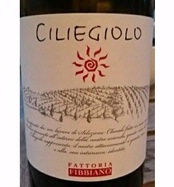 Often confused with Sangiovese, Ciliegiolo, which means small cherries, usually comprises part of a blend. But a few producers, such as Fibbiano, make a monovarietal wine from it. This is a lovely example, combining cherry-like fruit, earthiness and an attractive subtle bitterness in the finish. … Read more
Often confused with Sangiovese, Ciliegiolo, which means small cherries, usually comprises part of a blend. But a few producers, such as Fibbiano, make a monovarietal wine from it. This is a lovely example, combining cherry-like fruit, earthiness and an attractive subtle bitterness in the finish. … Read more
Assuli, Terre Siciliane IGT (Italy) Nero d’Avola “Besi” 2014
($18): 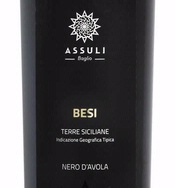 Enter a different style of Nero d’Avola. Assuli’s emphasizes the fruitier side of the grape. At 14.5 percent stated alcohol, it is riper and more lush, with fewer savory notes than the Nero d’Avola from Barone Sergio (also reviewed this week). … Read more
Enter a different style of Nero d’Avola. Assuli’s emphasizes the fruitier side of the grape. At 14.5 percent stated alcohol, it is riper and more lush, with fewer savory notes than the Nero d’Avola from Barone Sergio (also reviewed this week). … Read more
Barone Sergio, Eloro DOC (Sicily, Italy) Nero d’Avola “Sergio” 2010
($19, Artisanal Cellars): 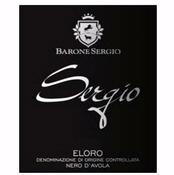 Nero d’Avola, the most widely planted red grape in Sicily, makes a diverse style of wine, ranging from fruity to more savory depending on where the grape grows and the producer’s style. This one focuses on the earthy, herbal character, though there’s plenty of dark fruit flavor as well. … Read more
Nero d’Avola, the most widely planted red grape in Sicily, makes a diverse style of wine, ranging from fruity to more savory depending on where the grape grows and the producer’s style. This one focuses on the earthy, herbal character, though there’s plenty of dark fruit flavor as well. … Read more
Prà, Soave Classico (Veneto, Italy) Monte Grande 2016
($29, Vinifera Imports): 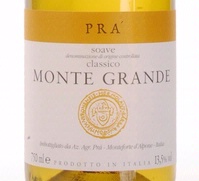 Prà, like Pieropan, is a benchmark producer of Soave Classico. The Prà name on a label is as good a guarantee of quality as you can get. Their flagship Soave Classico bottling is from the well-regarded and well-situated Monte Grande vineyard. … Read more
Prà, like Pieropan, is a benchmark producer of Soave Classico. The Prà name on a label is as good a guarantee of quality as you can get. Their flagship Soave Classico bottling is from the well-regarded and well-situated Monte Grande vineyard. … Read more
Pieropan, Soave Classico (Veneto, Italy) Calvarino 2015
($26): 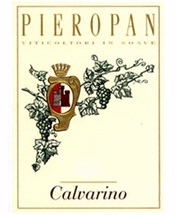 Pieropan is undoubtedly one of great names in Soave. They have been instrumental in resurrecting the prestige of the area with their consistent production of stellar wines, from their “regular” (though none of their wines are “regular”) Soave Classico to their single vineyard bottlings, such as this one. … Read more
Pieropan is undoubtedly one of great names in Soave. They have been instrumental in resurrecting the prestige of the area with their consistent production of stellar wines, from their “regular” (though none of their wines are “regular”) Soave Classico to their single vineyard bottlings, such as this one. … Read more
Cà di Rajo, Valdobbiadene Prosecco Superiore DOCG (Veneto, Italy) “Cuvée del Fondatore” Brut 2016
($17): Prosecco has gained so much popularity worldwide that its name has replaced the word Champagne as the generic term for all sparkling wine. Sadly, much Prosecco is mass-produced and uninteresting. Typically, the path to finding a more distinctive Prosecco takes the consumer to a difficult to pronounce DOCG, Valdobbiadene Prosecco Superiore. … Read more
Quintarelli, Valpolicella Classico Superiore (Veneto, Italy) 2009
($85, Kermit Lynch): 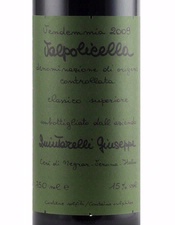 Valpolicella originally was an inexpensive delightfully light red wine, not an “important” or prestigious one. Over the last several decades, many producers have ramped it up by performing a “ripasso,” adding either dried grapes or the leftover must from another fermentation to the fresh pressed juice, which increased the alcohol content and the overall weight of the finished wine. … Read more
Valpolicella originally was an inexpensive delightfully light red wine, not an “important” or prestigious one. Over the last several decades, many producers have ramped it up by performing a “ripasso,” adding either dried grapes or the leftover must from another fermentation to the fresh pressed juice, which increased the alcohol content and the overall weight of the finished wine. … Read more
Rocca delle Maciè, Morellino di Scansano DOCG (Tuscany, Italy) “Campo Macione” 2015
($15, Palm Bay International): Rocca delle Maciè consistently makes lovely Chianti Classico, so it’s no surprise that they succeed with the Sangiovese grape further south in Scansano. Their Morellino di Scansano 2015 focuses more on ripe cherry-like fruit than earthiness, but a hint of savory notes and bright acidity keeps it in balance. … Read more
Feudi di San Gregorio, Falanghina del Sannio DOC (Campania, Italy) 2015
($15, Palm Bay International): Falanghina, the grape was named after falengae, the Latin word for the stakes the Romans used to support the vine, is my “go to” wine in Italian restaurants with modest wine lists because it almost always represents good value.… Read more
Vazart-Coquart et Fils, Champagne (France) Blanc de Blancs Brut NV
($52): 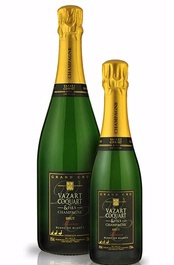 Not many producers make a non-vintage Blanc de Blanc Champagne. Fortunately, this small grower does. Made entirely from Chardonnay grown in the Grand Cru village of Chouilly, it’s enticingly creamy and elegant. A delicate toasty, yeasty element just adds to its allure. … Read more
Not many producers make a non-vintage Blanc de Blanc Champagne. Fortunately, this small grower does. Made entirely from Chardonnay grown in the Grand Cru village of Chouilly, it’s enticingly creamy and elegant. A delicate toasty, yeasty element just adds to its allure. … Read more
Domaine Louis Michel, Chablis Grand Cru (Burgundy, France) Vaudésir 2014
($66): My advice to Chablis-lovers is to snap up this wine. It’s really no surprise since it’s a trifecta: Louis Michel is a great producer of pure distinctive Chablis, Vaudésir along with Les Clos are the two top Grand Cru vineyard sites in Chablis, and 2014 was a stellar vintage for white Burgundy in general. … Read more
Patrick Piuze, Chablis (Burgundy, France) “Coteau de Fontanay” 2016
($29, David Bowler Wine): Though another one of Piuze’s village Chablis comes from Fontanay, not far from Fyé, it has a very different signature, showing there are dramatic differences between the communes than make up the greater Chablis appellation. Piuze’s 2016 Coteau de Fontanay has a touch more ripeness and roundness than his Terroir de Fyé, while maintaining an underlying and balancing vivacity and edginess. … Read more
Patrick Piuze, Chablis (Burgundy, France) “Terroir de Fyé” 2016
($29, David Bowler Wine): 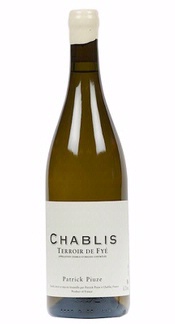 There is a longstanding tradition of identifying vineyards when making Chablis Premier and Grand Cru. Fewer producers do that with village wines, preferring to simply label the wine Chablis. Piuze, who like many relatively new small négociants owns no vineyards, opting instead to buy grapes from local growers, is able to take an intermediate approach. … Read more
There is a longstanding tradition of identifying vineyards when making Chablis Premier and Grand Cru. Fewer producers do that with village wines, preferring to simply label the wine Chablis. Piuze, who like many relatively new small négociants owns no vineyards, opting instead to buy grapes from local growers, is able to take an intermediate approach. … Read more
Cà Rugate, Soave Classico (Veneto, Italy) “San Michele” 2016
($16): 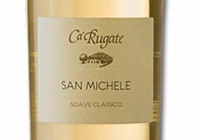 Not a single-vineyard wine, San Michele is the name. Cà Rugate’s San Michele bottling is a blend from several of their vineyards located in the Soave Classico subregion, the best area for Soave production. More fruity than mineraly, it blossoms with air, befitting a young wine. … Read more
Not a single-vineyard wine, San Michele is the name. Cà Rugate’s San Michele bottling is a blend from several of their vineyards located in the Soave Classico subregion, the best area for Soave production. More fruity than mineraly, it blossoms with air, befitting a young wine. … Read more
Nardello, Soave Classico (Veneto, Italy) 2016
($14): Nardello is one of the producers changing the image of Soave. A key to finding top quality Soave is to look for those, such as this one, that comes from the Classico subregion. Fortunately for consumers the price of Soave from these top producers has not caught up to the quality.… Read more
Cà Rugate, Soave Classico (Veneto, Italy) Monte Fiorentine 2015
($20): Both the 2015 and 2016 are in some markets simultaneously. They offer a superb example of the differences between the vintages, with 2015 being riper and 2016 being racier. Hence, something for everyone. Cà Rugate opts to use Garganaga exclusively from this 15-acre vineyard that sits about 600 feet above sea level. … Read more
Cà Rugate, Soave Classico (Veneto, Italy) Monte Fiorentine 2016
($20): 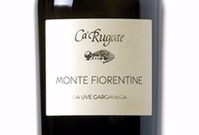 This wine ticks all the right boxes. Cà Rugate is a top Soave producer. Monte Fiorentine, a single-vineyard bottling from their old vineyards with vines that are approximately 50 years old, according to Francesco Ganci, their Italian commercial direction, is their top Soave. … Read more
This wine ticks all the right boxes. Cà Rugate is a top Soave producer. Monte Fiorentine, a single-vineyard bottling from their old vineyards with vines that are approximately 50 years old, according to Francesco Ganci, their Italian commercial direction, is their top Soave. … Read more
Ottella, Lugana Riserva (Veneto, Italy) “Molceo” 2014
($30): Wines like this one will make Lugana a common name. That Ottella could make a wine this polished in 2014, a “challenging” year, to say the least, shows the dedication of this producer. It’s floral and elegant, with just the right understated hints of tropical fruit.… Read more
Le Morette, Lugana DOC (Veneto, Italy) Mandolara 2016
($22): Lugana, a small DOC just south of Lake Garda, is a treasure trove of well-priced white wines. Le Morette’s single-vineyard Mandolara is just one example. The grape, formerly thought to be Trebbiano di Soave (and sometimes still referred to that on labels), is Turbiano, a distinctly different variety as determined by DNA analysis. … Read more
Cavalchina, Custoza Superiore (Veneto, Italy) “Amedeo” 2015
($18): The Custoza DOC, formerly known as Bianco di Custoza, has suffered in the past from watered-down versions made by co-ops and other industrial-sized producers. Cavalchina is trying to change the reputation and certainly will do so as more consumers taste their wines. … Read more
Guyot Choppin, Champagne (France) NV
($30): 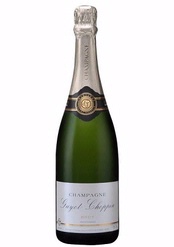 Real Champagne at 30 bucks a bottle these days makes you stop and look. One taste makes you buy a case. Fresh and delicately fruity, this lighter styled Champagne has the elegance and length you’d expect. Those looking for a toasty bigger style of Champagne will be disappointed, but others who favor the more delicate style will embrace this bargain-priced bubbly.… Read more
Real Champagne at 30 bucks a bottle these days makes you stop and look. One taste makes you buy a case. Fresh and delicately fruity, this lighter styled Champagne has the elegance and length you’d expect. Those looking for a toasty bigger style of Champagne will be disappointed, but others who favor the more delicate style will embrace this bargain-priced bubbly.… Read more
Domaine des Gandines, Crémant de Bourgogne (Burgundy, France) NV
($17): 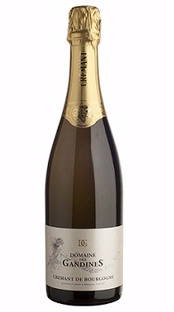 Domaine des Gandines, a family run winery located in the Mâconnais, produces a variety of still white wines from that region, Viré-Clessé, and Macon-Peronne, that are available in the U.S. This Crémant, as good as it is — and well priced to boot — is not available yet, but hopefully that will change.… Read more
Domaine des Gandines, a family run winery located in the Mâconnais, produces a variety of still white wines from that region, Viré-Clessé, and Macon-Peronne, that are available in the U.S. This Crémant, as good as it is — and well priced to boot — is not available yet, but hopefully that will change.… Read more
